The hidden dangers of ammonia
Introduction to Ammonia in Aquariums
Ammonia is a compound that naturally forms in aquariums, mainly due to fish waste, uneaten food, and decaying plant matter. It is highly toxic to aquatic life, even in small amounts. As an essential part of the nitrogen cycle, ammonia plays a key role in breaking down waste materials, but it can quickly become a dangerous substance if not properly managed.
Why is ammonia dangerous to fish and other aquarium inhabitants? Ammonia is harmful because it interferes with the gill function of aquatic creatures, leading to difficulty breathing and a variety of health problems. Even though beneficial bacteria break it down, high levels of ammonia can overwhelm an aquarium's natural filtration system, creating a hazardous environment for its occupants.
The dangers of ammonia become more apparent when the nitrogen cycle is incomplete or unbalanced. Fish exposed to high levels of ammonia can suffer from physical damage, stress, and long-term health issues. Monitoring ammonia levels is essential to ensure that your aquarium remains a safe and healthy habitat for its residents.
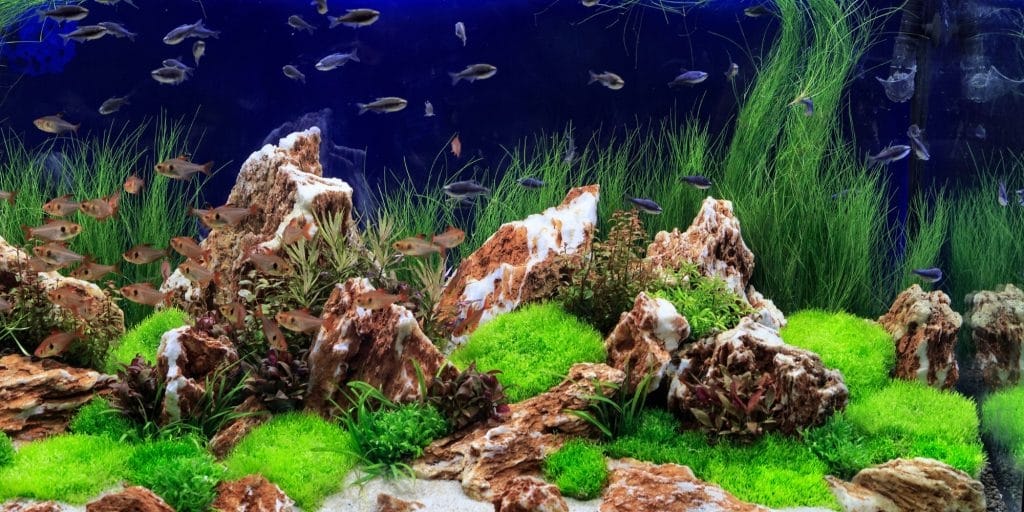
What Causes Ammonia to Build Up in Aquariums?
Ammonia naturally forms in aquariums as a byproduct of organic waste. How bad is ammonia for your tank? When fish excrete waste, it breaks down into ammonia, which is further broken down by nitrifying bacteria in a well-established filter. However, when these bacteria are not present in large enough numbers, or if the tank is overloaded with fish or waste, ammonia levels can rise dangerously.
Ammonia buildup is often triggered by overfeeding, improper water changes, or inadequate filtration. Ammonia toxicity can occur when excess food decomposes into ammonia, and there aren’t enough beneficial bacteria to convert it into less harmful substances. In new tanks, the nitrogen cycle may still be in the process of being established, allowing ammonia to accumulate in the water column.
An unbalanced tank can lead to the rapid buildup of ammonia, which causes harmful effects not only for fish but also for plants and invertebrates. Ammonia toxicity can stifle plant growth and compromise the health of your entire ecosystem, emphasising the importance of proper maintenance.
The Toxicity of Ammonia: Why It’s Dangerous
Ammonia toxicity is one of the most common water quality problems in aquariums. Ammonia can damage fish gills, making it harder for them to extract oxygen from the water. It also causes stress, which weakens the immune system, making fish more susceptible to diseases and infections. Prolonged exposure to high ammonia levels can result in irreversible damage to internal organs and even death.
Ammonia poisoning in fish can be difficult to detect early on. Fish may exhibit erratic swimming patterns, gasping for air at the surface, or even lethargy as they struggle to breathe properly. When exposed to ammonia poisoning, fish may experience burns on their gills or skin, further weakening their defenses.
Because ammonia toxicity is so detrimental to aquatic life, keeping ammonia levels as close to zero as possible is essential. Regular water testing and careful monitoring of tank conditions will help you prevent ammonia toxicity from reaching dangerous levels.
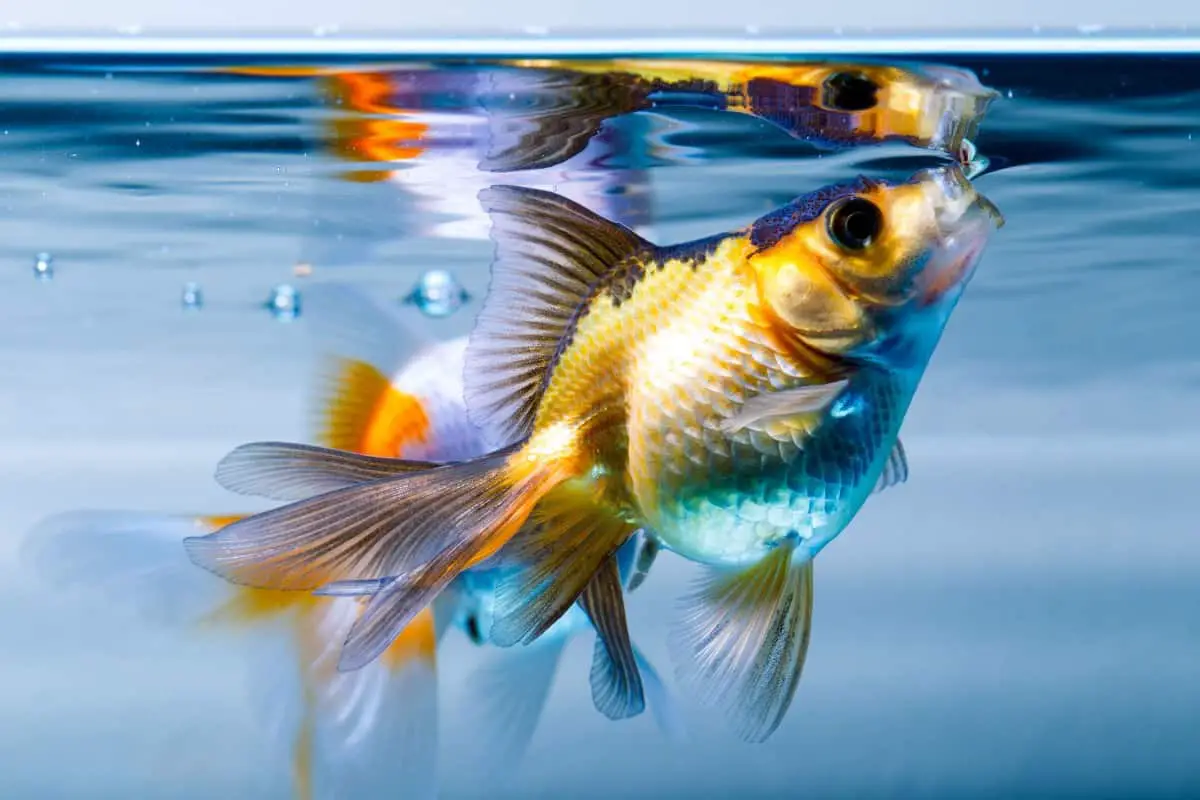
Testing Ammonia Levels in Your Aquarium
To understand how bad is ammonia in your tank, it’s important to regularly test the water. Ammonia test kits are widely available and can measure both free ammonia and ammonium levels, which are important for understanding the toxicity in your aquarium. Free ammonia, the more harmful form, is toxic to fish, while ammonium is less so but can still cause problems under certain conditions.
When testing for ammonia, it’s crucial to interpret the results correctly. Ammonia poisoning can occur if ammonia levels exceed 0.25 ppm (parts per million), but the toxicity depends on the water’s pH and temperature. At higher pH levels, ammonia becomes more toxic, so monitoring ammonia levels and ensuring the water parameters are stable is key to avoiding ammonia toxicity.
Once you’ve tested your aquarium water, adjusting the filtration system or increasing water changes may be necessary to bring ammonia levels back under control. Regular testing is an essential practice for ensuring that your aquarium remains a safe, healthy environment for all its inhabitants.
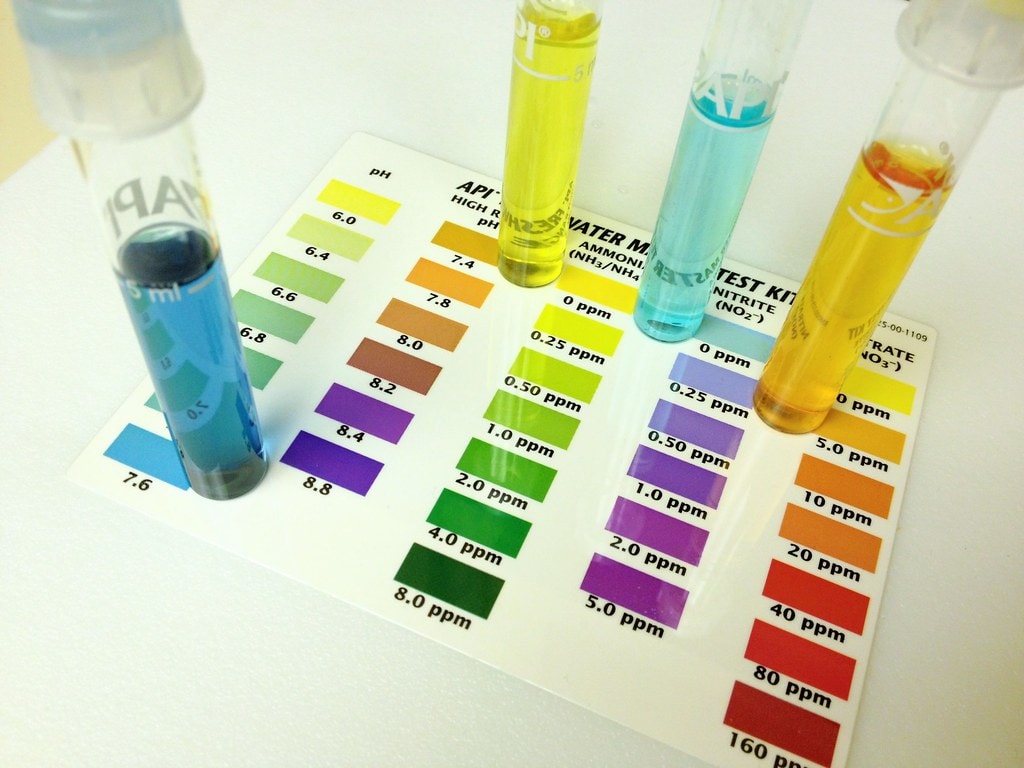
Managing Ammonia Spikes in Your Aquarium
Ammonia spikes in an aquarium are a common issue that aquarium owners must manage carefully. These sudden increases in ammonia levels can result from a variety of factors, including overfeeding, excess fish waste, or inadequate biological filtration. When ammonia spikes occur, it can lead to ammonia burn in fish, which causes damage to their gills and skin, potentially resulting in death.
In order to manage ammonia spikes, it is crucial to monitor ammonia levels regularly using an ammonia test kit. Keeping an eye on nitrate and ammonia levels will help you prevent toxic conditions from forming. Additionally, using a liquid test kit to monitor water quality can give you a more accurate picture of what's happening in your tank. Regular water changes can also help to dilute the ammonia in the tank, maintaining a safe environment for your fish.
The Role of Biological Filtration in Reducing Ammonia
Biological filtration plays a critical role in converting harmful ammonia into safer compounds. As beneficial bacteria colonize your tank's filter media, they begin to break down ammonia through the nitrogen cycle. These good bacteria convert ammonia into nitrites and then further into nitrates, which are much less harmful to aquatic life. However, if biological filtration is insufficient, ammonia spikes can occur, putting stress on your tank's inhabitants.
It's important to establish and maintain healthy colonies of beneficial bacteria during the cycling process of your aquarium. These bacteria thrive on fish waste and decaying matter, ensuring that ammonia is processed and removed. Without this biological filtration, your aquarium would be more susceptible to issues like dead fish and ammonia burn, so it's crucial to support this process by providing a stable environment for bacteria to grow.
Impact of Overfeeding and Uneaten Food on Ammonia Levels
Overfeeding your fish is one of the most common causes of ammonia spikes in a tank. When fish are given more food than they can consume, the uneaten food decays and releases ammonia into the water. This excess food contributes to higher ammonia levels and can also create an environment for bacteria to thrive, leading to additional waste and a buildup of harmful substances. It's crucial to monitor the amount of food being given to the fish and adjust accordingly.
If uneaten food is left to decay, it can also attract unwanted organisms, which can further compromise water quality. Regular water changes are essential to remove excess nutrients, including nitrate, and prevent ammonia burn in fish. Regularly cleaning the substrate and filter media also helps in reducing the buildup of organic waste, which, if left unchecked, can lead to more severe issues in your fish tank, such as dead fish and compromised fish health.
Testing and Monitoring Ammonia in Your Fish Tank
Regular testing is essential for keeping your aquarium safe and healthy. Using an ammonia test kit helps you track ammonia levels, especially during the initial stages of the cycling process. Monitoring ammonia helps you ensure that your biological filtration is functioning properly and that ammonia levels are under control. Many aquarists prefer a liquid test kit for its accuracy in detecting even small amounts of ammonia in the water.
Additionally, using test strips can be a quick way to monitor your tank's water parameters, although they may not be as precise as liquid test kits. As part of a comprehensive aquarium maintenance routine, it's important to regularly test for nitrate, ammonia, and other key factors to prevent ammonia spikes. If ammonia levels are too high, you may need to increase water changes or adjust your filtration system to help maintain a safe environment for your fish.
How New Fish Can Contribute to Ammonia Build-Up
Introducing new fish into your aquarium can lead to an increase in ammonia levels, especially if the tank is not yet fully cycled or if the filtration system is not fully capable of handling the added waste. When new fish are added, they produce more fish waste, which is a major contributor to ammonia production. Even if the tank's biological filtration system is established, the additional waste can overwhelm the system, resulting in ammonia spikes.
To prevent these spikes, it's important to add new fish gradually and monitor the ammonia levels closely. It’s also essential to ensure the aquarium is properly cycled, and that the beneficial bacteria needed to break down ammonia are established and abundant. If you notice any signs of ammonia poisoning in your new fish, such as erratic behavior or damaged gills, immediately perform a water change to lower the ammonia concentration and improve the tank's environment.
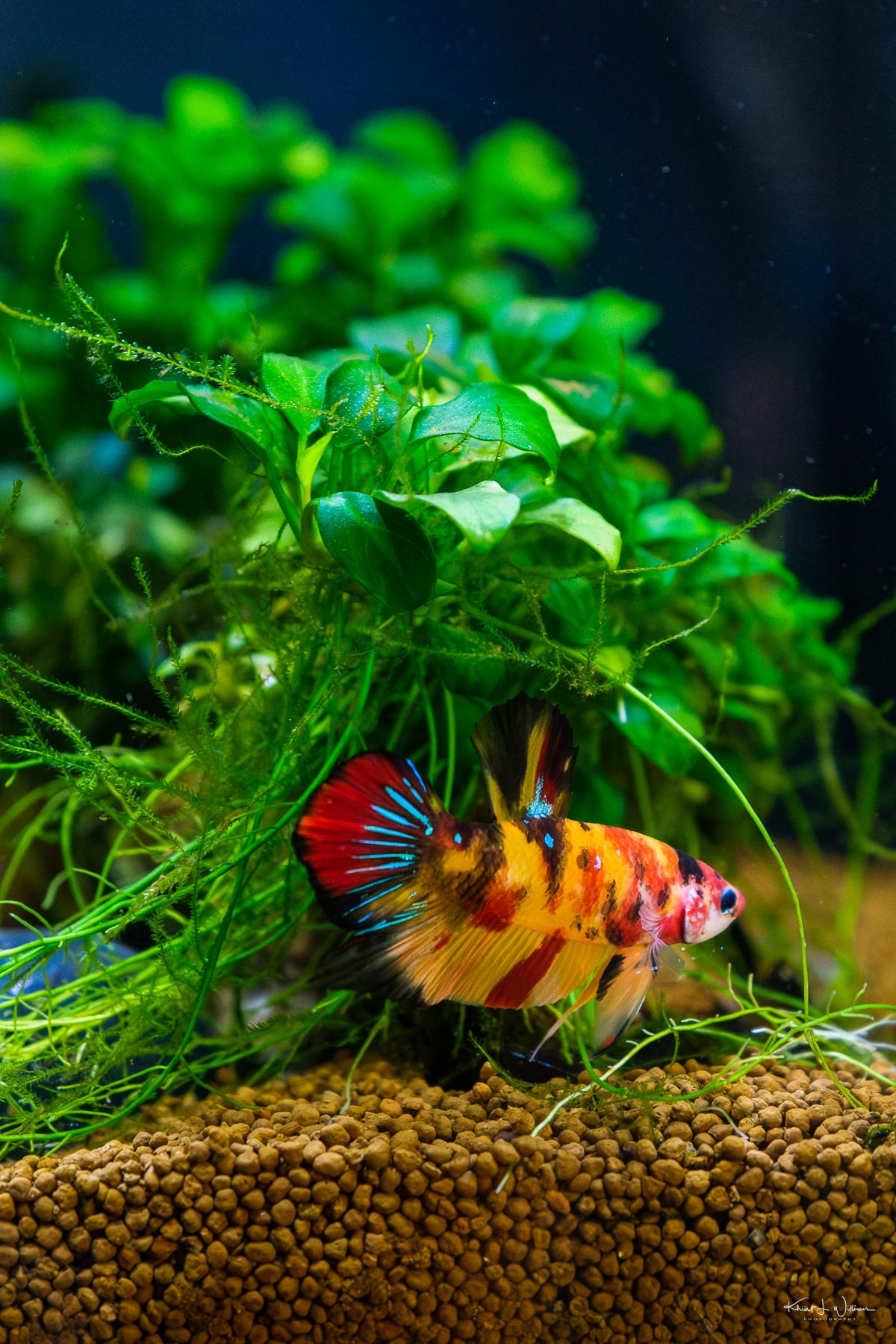
Maintaining Your Tank’s Ammonia Levels with Regular Water Changes
Regular water changes are one of the most effective ways to maintain a safe and healthy environment for your fish by controlling ammonia levels. Changing about 10-20% of the water each week helps dilute harmful substances, including ammonia and nitrate, while replenishing essential minerals. Water changes are particularly crucial during the cycling process when ammonia is being processed into nitrites and nitrates, as they help keep these substances at manageable levels.
When performing water changes, make sure to use a dechlorinator if you are using tap water, as chlorine can be harmful to fish and beneficial bacteria. Additionally, cleaning the filter media and vacuuming the substrate can help remove uneaten food, fish waste, and organic matter that could contribute to ammonia buildup. This routine maintenance ensures your tank stays healthy and reduces the risk of ammonia burn or toxicity that could harm your fish.
The Role of CO₂ Injection and Its Relationship to Ammonia in Aquariums
CO2 injection is widely used in planted aquariums to support lush plant growth, but it also indirectly plays a role in managing ammonia levels. Healthy plants absorb ammonia, nitrate, and other nitrogen-based compounds as nutrients. By enhancing plant health through CO2 enrichment, aquarists can help reduce toxic ammonia and nitrate buildup. This natural uptake by plants supports a more stable and biologically balanced aquarium, particularly in systems that may struggle with ammonia spikes.
However, it's important to maintain balance. Too much CO2 can lead to fluctuations in pH, which may stress fish and indirectly affect the efficiency of beneficial bacteria involved in the nitrogen cycle. These bacteria play a key role in breaking down fish waste, uneaten food, and other organic matter into less harmful substances. Therefore, while CO2 injection can support ammonia control, it must be carefully regulated alongside strong biological filtration and proper tank maintenance.
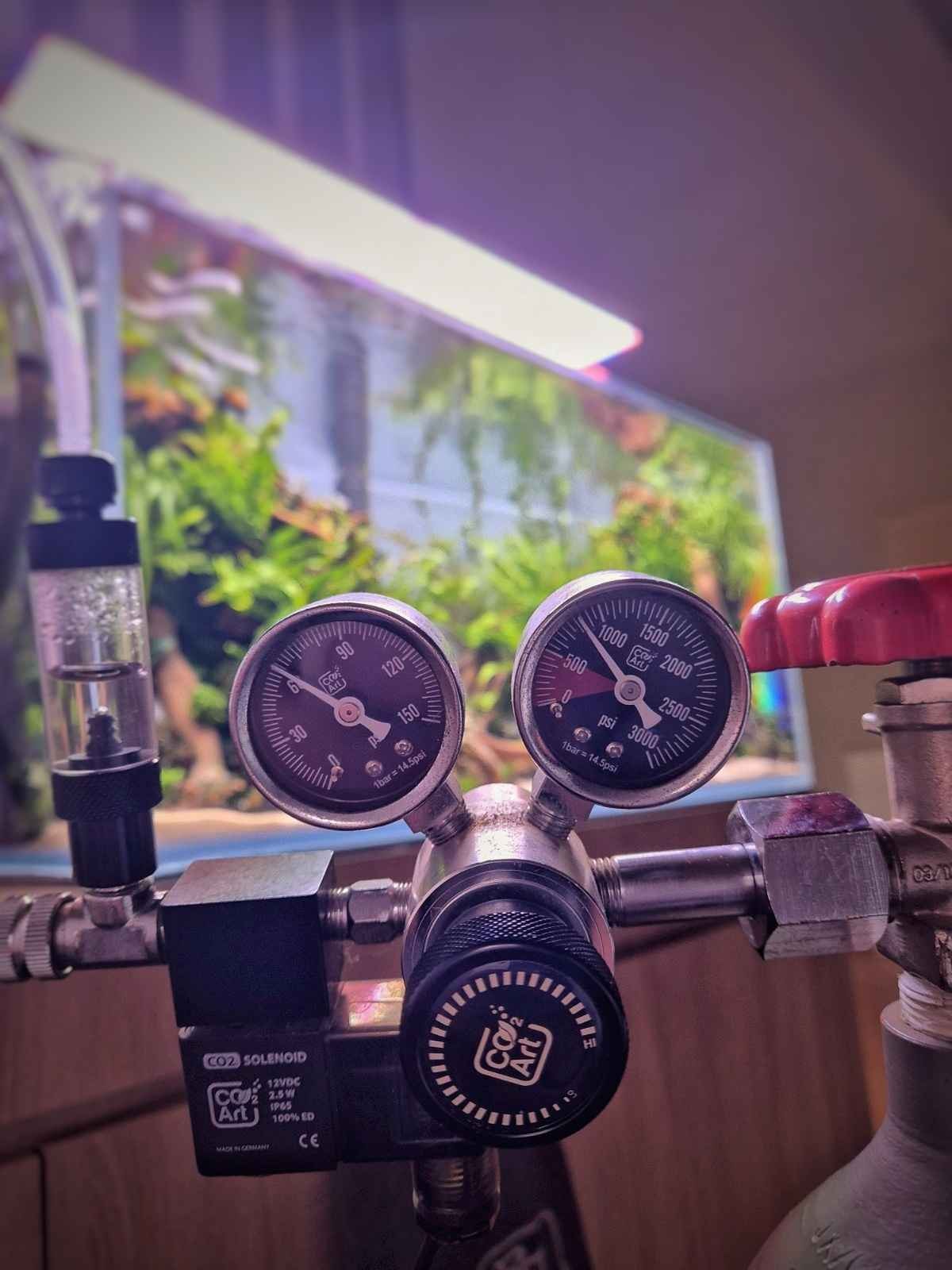
Avoiding Ammonia Poisoning: Signs and Prevention
Ammonia poisoning is a serious risk to your fish and can manifest in a variety of symptoms, including gasping at the water’s surface, sluggish behavior, and visible damage to gills. Ammonia burn, which occurs when fish are exposed to high levels of ammonia for prolonged periods, can lead to tissue damage and even death. To prevent this, it’s important to regularly monitor your tank’s water quality using an ammonia test kit or test strips. These tools help you keep track of ammonia levels and take action before they become dangerously high.
In addition to monitoring ammonia, ensure that your tank's filtration system is working effectively. This includes checking that your filter media is not clogged and that your biological filtration is functioning correctly to break down ammonia. If ammonia levels begin to rise, perform immediate water changes to dilute the toxins. By staying proactive and maintaining the proper filtration, you can reduce the risk of ammonia poisoning and ensure a safe environment for your fish.
Conclusion: Maintaining a Safe Environment for Your Fish and Preventing Ammonia Toxicity
Understanding and managing ammonia levels is crucial for maintaining a healthy fish tank. By regularly testing for ammonia with an ammonia test kit or test strips, performing timely water changes, and ensuring that your biological filtration is functioning properly, you can prevent ammonia poisoning and promote the well-being of your fish. Additionally, avoiding overfeeding and monitoring the health of your tank will help you keep ammonia levels in check.
Incorporating these simple yet effective practices into your routine aquarium care will not only prevent the harmful effects of ammonia but also ensure a thriving environment for your fish. With proper filter media, biological filtration, and regular maintenance, you can enjoy a healthy tank with happy fish, free from the dangers of ammonia spikes and toxicity.



